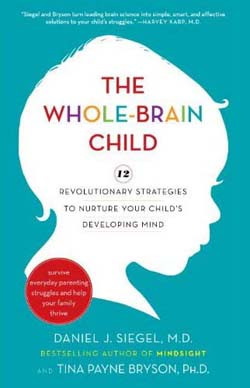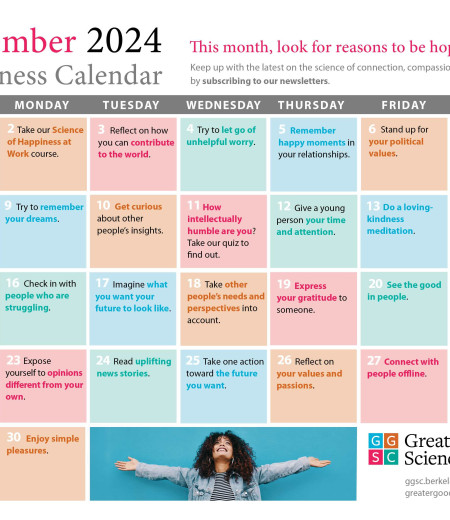
A review of Daniel Siegel and Tina Payne Bryson's The Whole-Brain Child: 12 Revolutionary Strategies to Nurture Your Child’s Developing Mind.
By Diana Divecha | February 15, 2012 BookmarkAs brain research continues to show, childhood is a time of tremendous neural growth. The young brain literally changes shape in response to everything it encounters, from new experiences to people to relationships. It’s up to adults to try to influence that growth in a positive direction. And with The Whole-Brain Child, Daniel Siegel and Tina Payne Bryson have written a book to help us do just that.
Siegel and Bryson, the executive director and the director of parenting education, respectively, at the Mindsight Institute in Los Angeles, offer 12 strategies that adults can use to help nurture their children’s maturing brains. The strategies support children in developing fruitful connections between their emotional and logical brains, which in turn helps them to manage feelings, understand themselves, be calmer and happier, and form balanced relationships. Some potent examples:

Delacorte Press, 2011, 176
Strategy #1: Connect and Redirect. The right hemisphere of the brain (emotional and nonverbal) develops earlier than the left hemisphere (logical and linguistic). That’s why very young children frequently dissolve into a flood of feelings that can seem to overwhelm any attempts to manage them. The authors recommend that in the middle of a meltdown, you first connect with the child through your own right brain—feeling the child’s feelings, soothing, and naming the feelings—before trying to reason with the child. When children “feel felt” and cared for, they’re quicker to recover and re-establish cooperation with their parents.
Advertisement X
Strategy #3: Engage, Don’t Enrage: Appealing to the Upstairs Brain. The frontal cortex (what Siegel and Bryson call the “upstairs brain”) is responsible for rational self-monitoring and decision-making, and it isn’t fully developed until our mid-20s. But the “downstairs brain,” which monitors threats and expresses emotions, is active at birth. Parents can help build the “staircase” between the two throughout childhood by looking for opportunities to teach kids negotiation, compromise, reason, and problem-solving.
Strategy #10: Exercise Mindsight: Getting Back to the Hub. Siegel has written about “Mindsight” in other books and shows here how to make it accessible to children. For Siegel, Mindsight is the ability to understand one’s own mind as well as the minds of others. One tool for Mindsight is a “wheel of awareness,” where the hub is our calm, receptive, and clear Self, and around the rim are the transient feelings, thoughts, and memories that flicker through our mind. When a child perseverates on one section of the rim—anxiety about a perfect performance, for example—a parent can help her to remember that she also experiences joy, relaxation, and fun during the same activity. The result is a healthier, more holistic perspective that shapes the brain for the better, since “neurons that fire together, wire together”: In the folds of the brain, those positive feelings become intertwined with the child’s general thoughts about that activity. Adults can have a hard time controlling the focus of their thoughts and feelings, to the point that they may not believe such control is even possible. But imagine how much easier the practice becomes if you cultivate it from childhood!
Siegel and Bryson’s tips are deceptively simple, but they’re based on substantial research on the developing brain, best practices for well-being scaled to children’s development, and decades of their clinical experience with families and children. If you don’t have time to read the book, simply clip out the summary chart of “Whole-Brain” parenting strategies from the back of the book and glance at it every so often; the emotional fabric of your family life will surely benefit.
But if you want to dig further and learn how a child’s brain and nervous system develop, or understand Siegel’s revolutionary theory of Mindsight, on which the tips are based, The Whole-Brain Child provides a rich and illuminating tour of scientific insights—all there in easy-to-read language, illustrated with real scenarios.
It is especially the difficult moments—children’s meltdowns, conflicts, ruminations, rigidities, anger, and negative feelings—that Siegel and Bryson encourage parents to gently lean into; it is in those moments, the authors believe, that parents can most effectively nurture positive growth in their kids. The more we harmonize our parenting skills with the way children actually develop, the more likely they are to unfold peacefully, be able to manage their thoughts and feelings, and ultimately express their gifts and potential in the clearest ways possible.
After all, development can be a life-long process. Reading The Whole-Brain Child may help our own awareness—or Mindsight—grow along with that of our children.
Greater Good wants to know: Do you think this article will influence your opinions or behavior?